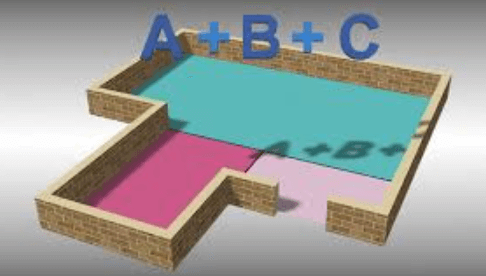Tips For Calculating Square Footage In A Home

Introduction
When you purchase a new home like the one in New Metro City Gujar Khan, thinking about how to evaluate its square footage probably is not the main priority. And while it may seem like an inconsequential metric, it’s one of the most important factors determining a property’s value. Marlon Day, senior director of Quest Valuation & Advisors in Atlanta says that If you don’t properly measure a property, it would be a domino effect. It’s going to throw entire value off.
Why square footage is important
There are several reasons that one might want to know about ways to calculate the square feet of a house, whether you are willing to sell a property, dispute a huge tax assessment or renovate to add more space.
When you’re preparing to list your home for sale, determining the property’s exact size is crucial when setting your asking price. “For valuating a home, we would to compare it to comparable or ‘comps,’” says Day, who searches for homes of identical size in the immediate area i.e. 7 Wonders City Islamabad. An improper square footage measurement could possibly result in an improper appraisal price.
Calculating the square feet of a house
When preparing to evaluate the square footage of a home, be it a condo, house, or townhouse, initiate with a few simple supplies:
- Paper and pencil
- Calculator
- Measuring tape and/or laser measuring tool
If the property is a perfect rectangle, measure the length and width and multiply those two numbers together. For example, if your one-story house is 60 feet wide by 40 feet long, your property is 2,400 square feet (60 x 40 = 2,400).
However, majority of properties have far complex floor plans. When this is the case, it would be helpful to follow these easy steps to evaluate square footage.
- Draw a rough sketch of your entire space, labeling all the rooms you need to measure. That includes vestibules and hallways as their own “room.”
- Measure the length and width, in feet, of each room. Then, multiply the entire length by the width to evaluate the square footage of whole room. For instance: If a bedroom is around 12 feet by 20 feet, it is overall 240 square feet (12 x 20 = 240). Must write the overall square footage in the corresponding space on your sketch for every room.
- Once each room is measured, add all the measurements to determine your home’s total square footage.
What Is Included In The Square Footage?
During measurement of the square footage of a house, it is important to know what can and cannot be included in the calculations. For instance, not every foot of the home enclosed by walls would count towards total square footage. Instead, you are making efforts to determine the gross living area — or the lively parts of the home i.e. Blue World City Islamabad. Following are some specifications for measuring square footage:
Height Requirements
There is a single measurement far too many inexperienced evaluators don’t know about i.e. ceiling height. That is not to say that one must not measure the area as a three-dimensional space, but rather that the ceiling is one of such criteria already alluded above. For a square footage of entire area to count in the home’s overall square footage, the ceiling above needs to be at a particular height. As per the estimate by ANSI’s American National Standard For Single-Family Residential Buildings, finished areas should definitely have a ceiling height of at least seven feet, “apart from being under beams, ducts, and other obstructions where the height might be around six feet and four inches.”
Finished Home Connections
The subsequent area may be included in the home’s total square footage if you have a finished area connected to the house by a finished hallway or stairway. However, finished areas linked in any other way such as by any incomplete hallway or staircase, for example would mot be included in the total square footage of home.
Basements & Attics
Basements normally don’t count towards a gross living area of home regardless of whether they are completed. Since they are beneath the remaining of the home, basements cannot be included in the total square footage. So, homeowners might note the overall size of a finished basement in a respective listing somewhere else. On the other hand, attics can be counted in total square footage of a home, if they are completed and meet the height pre requisites stated above.
Conclusion
Those who know how to find a house’s square footage carry an inherent advantage in every deal they work on. Of particular importance, however, is accuracy. Those who can properly learn how to evaluate square footage of a house stand a greater chance of realizing success. At the very least, they will know exactly what they are getting into (or out of). Please get in touch with agents of Estate Land Marketing for further details.
Author Bio
Waqas Hussain is a SEO Specialist. Currently Head of SEO Department at Estate Land Marketing. With lots of experience in on-page SEO, Off-page SE, keyword research and advanced SEO Practices. With 4+ years of experience in managing blogs and scaling them from 0 to 100,000+ page views a month, it’s safe to say that I know a things about growing content-driven websites.




